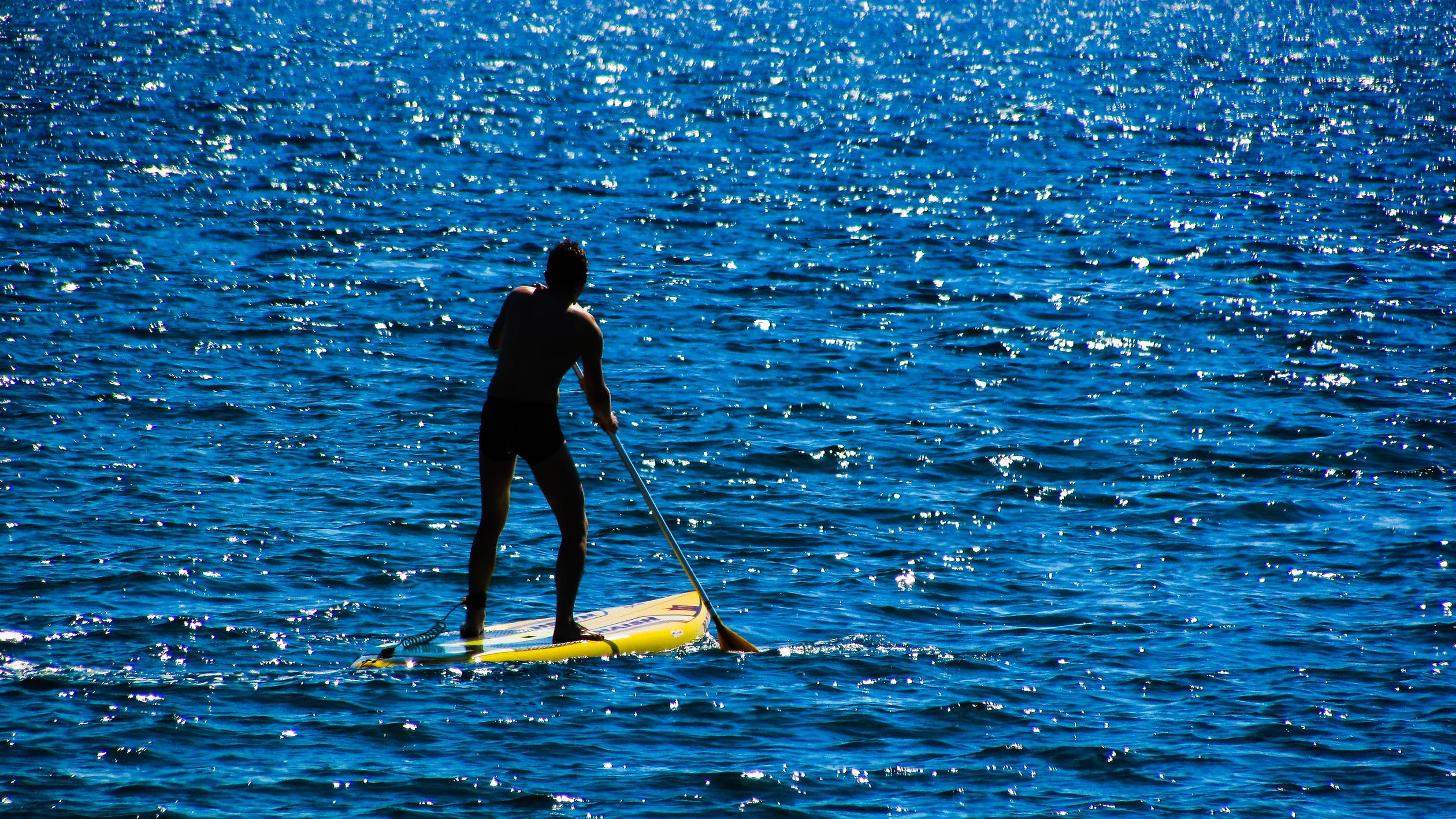
Paddle board is a large fat board used for riding the surf or for life saving. It is propelled by the rider using their arms, either lying face down or sitting up on their knees. It is made of glass reinforced plastic constructed using polyester or epoxy while Some are made of hollow woods.
Paddleboards are divided by length into three classes: The Stock, the14 Foot, and the Unlimited.
Stock boards are (3.7 m) in length which makes it easy to accelerate and move fast in choppy waters. It is the used by paddlers weighing about 82 kg or less.
14-foot class boards are regarded as the best. It is 4.3m in length; it’s the most used of all the paddle boards.
Unlimited boards are the swiftest of all the floating boards. The long waterline of unlimited boards enhances their speed also gives a longer glide per stroke. Its length ranges from 5.2 to 5.5 m.
STAND UP PADDLE BOARDING
Stand up paddle boarding is an offshoot of surfing and its origin can be traced to Hawaii. Stand up paddlers stand on their boards and use the paddles to propel through the water. The paddler’s wear is determined by the atmospheric condition. Their clothing includes wet suits.
HOW TO CHOOSE A STAND UP PADDLE BOARDS
To find the right sup, here’s what you need to consider:
Hull type: The proposed paddling plan would determine the hull type to choose. You can choose from the two main choices, the planing hull and the displacement hull;
SUP HULL TYPES
The hull, or body, of a paddle board plays a major role in determining how the board performs in the water. Most Stand Up Paddlers have either a planing hull or a displacement hull. Either hull shape can be enjoyed by paddlers, but there are differences that make them better for some activities than others.
Planing Hull
A planing hull is a flat wide board, similar to a surfboard. It is designed to ride on top of the water.
Displacement Hull
The efficiency of a displacement hull requires less effort than a planing hull to paddle, allowing you to go longer distances at faster speeds. Also, displacement hull track nice and straight but are generally a bit less maneuverable than planing hulls.
Solid or inflatable: the board performance, purpose of paddling, portability and storage options will determine whether to choose the solid board or an inflatable board.
Weight and Volume proportion: Picking a board with suitably corresponding volume and weight proportion that’s right for your height and weight to ensure good stability and paddling performance is necessary.
Size and durability: The dimensions (the Length, width and thickness) of a SUP plays a big role in determining how it handles on the water.
Other things to consider are the board’s fins and accessories that work for the paddler. Learn more about paddle boards by visiting https://www.inflatablepaddleboardinfo.com/
